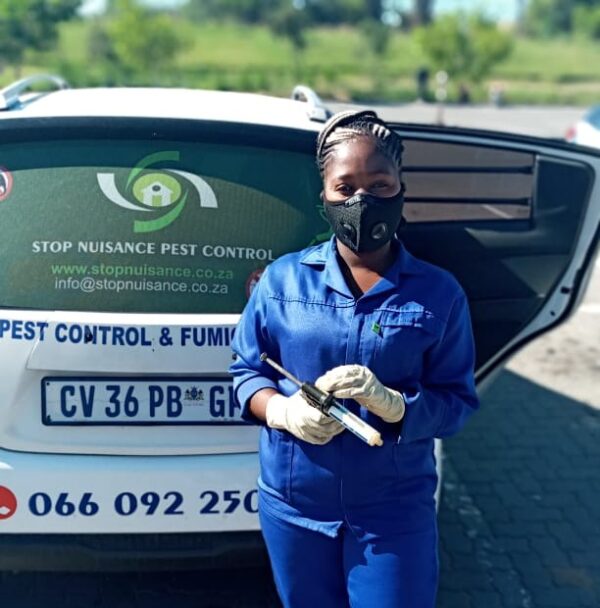Finding roaches crawling through your kitchen is every homeowner’s nightmare. These disease-spreading pests contaminate food and surfaces with bacteria-laden droppings and debris from their bodies. Getting rid of roaches quickly is crucial to protect your family’s health and sanity!
Many homeowners rely on powerful cleaners like bleach to kill and repel these unwanted insect infestations. But does bleach effectively kill roaches and keep them away permanently?
Understanding the pesticidal strengths and limitations around using bleach against roaches will lead to smarter application. Continue reading to become a roach-killing expert!
Table of Contents
The Types of Bleach Products That Kill Cockroaches
Not all bleach products are created equal when it comes to insect extermination. The active pest-killing ingredient to look for is sodium hypochlorite. This chemical compound found in chlorine bleach solutions is what causes oxidation damage to roach bodies on contact.
Here are the bleach products containing sodium hypochlorite that destroy roaches:
– Liquid chlorine bleach solutions typically 5-8% sodium hypochlorite
– Dry bleach powder concentrates around 40% sodium hypochlorite
– Bleach-based mold/mildew killer sprays with added surfactants for adhesion
– Pesticide sprays containing sodium hypochlorite + insecticidal soap
Avoid using bleach products without the sodium hypochlorite active ingredient against roaches, such as hydrogen peroxide, lemon juice, or sun-bleaching techniques. While helpful for cleaning, these non-chlorine bleaches won’t kill roaches. Stick to chlorinating formulas for pest destruction.
Is Using Bleach to Kill Roaches Dangerous?
Sodium hypochlorite bleach can be harmful to health with improper use, especially at full-strength concentrations. Always protect your eyes, skin, and lungs by wearing gloves, safety goggles, and a respirator when handling bleach.
Ingesting or breathing concentrated bleach fumes damages tissues and causes chemical burns. Allow treated areas to fully dry and ventilate before re-entry. Using excess bleach or allowing residues to mix with other chemicals like ammonia and acids produces lethal gas byproducts.
There are also environmental dangers to aquatic ecosystems and groundwater when bleach pesticides escape outdoors untreated. Responsible containment and disposal of bleaches are a must.
Follow Application Tips to Use Bleach Safely Against Roaches
When used correctly, certain bleach solutions can safely and effectively help destroy roach populations. Here are tips to gain control while minimizing risks:
– Only treat confirmed roach harborages instead of broad preventative spraying. Targeting cracks, crevices, and other tight hideouts is key.
– Use mold cleaner bleaches designed to adhere to vertical surfaces instead of thin liquid bleaches that quickly run off.
– Limit applications to small areas and use the minimal effective concentration. Avoid excessive dripping or pooling, as this can spread fumes.
– Ensure all food items and preparation surfaces are removed or thoroughly wiped before treatment. Never mix with other chemicals.
– Ventilate and allow all surfaces to completely dry before reoccupancy post-treatment to avoid chemical inhalation.
– Dispose of any remaining product cautiously to prevent environmental contamination from runoff.
Why Bleach Alone Won’t Keep Roaches Away Permanently
The problem with relying solely on bleach to manage roaches is that it only kills on contact. Bleach solutions lack residual killing power once dried. Plus, roaches avoid crossing treated areas, forcing them to spread to untreated zones.
While bleach eliminates roaches currently crawling and hiding in targeted locations, it does nothing to stop new roaches from invading. Without addressing the source causes, you end up trapped in a cycle of repeatedly bleaching the same areas.
Added Tactic: Insect Growth Regulator Bait + Sanitation
Completely removing an entrenched roach infestation requires attacking the colony reproduction cycle. Once hatched roaches die out without the next generation reaching maturity.
Combine sanitation, bleach contact kill sprays, and insect growth regulator baits like Vendetta Plus Roach Bait Gel. Growth regulators cause hatchlings to die before reaching reproductive age. Maintaining cleanliness and sealing entry points cut off survival resources over time.
Adding gel baits with an active ingredient like Abamectin alongside targeted bleach spraying delivers a one-two punch to collapse roach numbers for good. Continual monitoring and bait refills knock down any new colonies before they multiply.
Over time, the roach lifecycle collapses on itself when left uninterrupted. Stop infestations at the source early by combining methods. Learn more about roach baits that stop colonies at the core.
The Bottom Line: Smart Use of Bleach for Pest Control
Harboring roach infestations poses serious health risks that require urgent elimination using effective extermination methods. Incorporating the benefits of bleach to destroy roaches on contact alongside growth regulator baits, fumigation, and sealing cracks makes for a winning strategy.
But bleach alone cannot offer a long-term solution without addressing root causes. Rotating multiple mechanisms of action keeps roaches confused and unable to develop resistance. This eliminates current pests hiding in cracks and breaks the reproduction cycle to prevent future colonies from crashing your clean kitchen for good!

With over 5+ years of experience in pest control and a PhD in Entomology, our author brings a blend of scientific knowledge and practical expertise to Pestifier.com. Passionate about creating pest-free environments, they provide effective tips and strategies for managing and preventing pest infestations. Connect on Facebook for the latest updates and insights.

